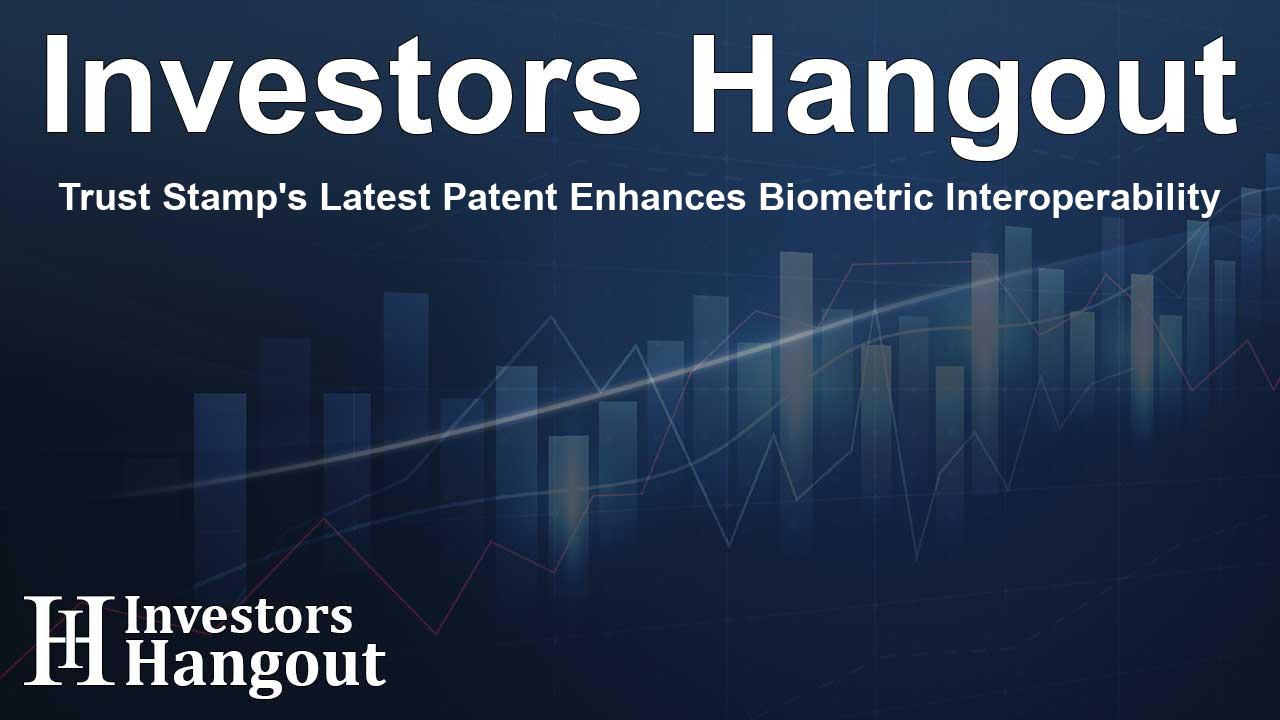Trust Stamp's Latest Patent Enhances Biometric Interoperability

Trust Stamp Unveils Patent for Biometric Solutions
Trust Stamp is excited to share a revolutionary development in biometric security and has received a major boost from the United States Patent and Trademark Office by getting its Non-Provisional Patent Application 17/725,978 approved. This patent centers on the "Interoperable Biometric Representation" which aims to tackle the longstanding issues of biometric interoperability, enhancing both privacy and security in identifying individuals.
Understanding Biometric Interoperability Challenges
Currently, biometric identification and verification systems play a crucial role in various sectors. Nonetheless, their adoption is often stifled by a lack of interoperability. Different biometric service providers utilize proprietary data formats, making it impractical to share and validate biometric samples across systems, which results in enterprise and government users being locked into specific vendors.
Transforming Biometric Data
With the advent of Trust Stamp's new framework, organizations can look forward to a significant transformation in how biometric data is handled. Their approach converts biometric data into a universal format that not only preserves privacy but also allows for seamless verification across various platforms. As a result, biometric samples collected from diverse vendor systems can now be compared without necessitating any alterations in how these vendors typically manage biometric data.
Privacy-Centric Technology
Another pivotal recommendation from Trust Stamp is the introduction of Privacy Enhancing Technology (PET) through the creation of privacy-secured tokens known as Irreversibly Transformed Identity Tokens (IT2™). These tokens facilitate biometric matching without the need to store or expose sensitive personal biometric data. This significantly diminishes the risks associated with data privacy issues while allowing users to validate their identities securely.
Expert Remarks on the Development
Scott Francis, the Chief Technology Officer at Trust Stamp, underscores the importance of this innovation by pointing out, "With the current landscape lacking interoperability in facial biometrics, this patent fills that crucial gap. It allows for the comparison of biometric samples from various vendors by translating their templates into a standardized format. This development also offers an open-format solution that approved vendors can employ to ensure compliance, eliminating unnecessary proprietary conversions."
Addressing Industry Woes
Furthermore, Dr. Norman Poh, the Chief Science Officer, emphasizes that this patent benefits the industry by tackling interoperability problems while also functioning in a privacy-preserving environment. He states, "This patent not only addresses interoperability challenges but operates under a privacy-preserving framework. The IT2 tokens allow users to gather and compare biometric data from numerous sources, thereby avoiding vendor lock-in, an issue that has severely impacted the industry."
Commitment to Privacy-First Solutions
The Interoperable Biometric Representation framework reflects Trust Stamp's dedication to creating secure, privacy-first identity verification solutions that advocate for secure financial inclusion. By removing vendor dependency and improving cross-platform biometric authentication, this advancement signifies a major leap toward establishing a more open and secure digital identity ecosystem.
For anyone interested in Trust Stamp’s innovative identity solutions that prioritize user privacy, you can learn more about their offerings by visiting www.truststamp.ai.
Frequently Asked Questions
What is the purpose of the Interoperable Biometric Representation patent?
This patent is designed to facilitate biometric interoperability, allowing secure recognition and validation across different platforms without locking users into any specific vendor.
How does Trust Stamp enhance biometric data privacy?
Trust Stamp employs Privacy Enhancing Technology, generating IT2™ tokens that enable biometric matching without the need to expose or store sensitive biometric data.
What challenges does this patent address?
This patent addresses the challenges of cross-vendor compatibility in biometric systems and the issue of vendor lock-in that inhibits organizations from utilizing diverse biometric solutions.
Who benefits from the developments made by Trust Stamp?
Organizations across various sectors, including finance, government, and healthcare, can benefit from enhanced, secure biometric solutions that streamline operations while prioritizing privacy.
Where can I find out more about Trust Stamp's offerings?
For additional information about Trust Stamp’s innovative solutions, visit their official website at www.truststamp.ai.
About The Author
Contact Dominic Sanders privately here. Or send an email with ATTN: Dominic Sanders as the subject to contact@investorshangout.com.
About Investors Hangout
Investors Hangout is a leading online stock forum for financial discussion and learning, offering a wide range of free tools and resources. It draws in traders of all levels, who exchange market knowledge, investigate trading tactics, and keep an eye on industry developments in real time. Featuring financial articles, stock message boards, quotes, charts, company profiles, and live news updates. Through cooperative learning and a wealth of informational resources, it helps users from novices creating their first portfolios to experts honing their techniques. Join Investors Hangout today: https://investorshangout.com/
The content of this article is based on factual, publicly available information and does not represent legal, financial, or investment advice. Investors Hangout does not offer financial advice, and the author is not a licensed financial advisor. Consult a qualified advisor before making any financial or investment decisions based on this article. This article should not be considered advice to purchase, sell, or hold any securities or other investments. If any of the material provided here is inaccurate, please contact us for corrections.
